The Psychology of Office Furniture and Workspace Design
In today’s competitive business landscape, office space design transcends aesthetics—it is a strategic tool that profoundly impacts employee well-being, productivity, and overall business success. Understanding the psychology behind office furniture and interior design is crucial for creating a workspace that not only looks appealing but also fosters a healthy, productive environment. This article delves into how thoughtful workspace design can transform your office into a hub of efficiency, creativity, and positivity.

The Impact of Office Design on Employee Well-Being
Harnessing Natural Light and Biophilic Design
Research consistently shows that office environments with inadequate lighting and limited natural views can lead to increased sick leave and decreased employee satisfaction. Incorporating natural elements—such as sunlight, plants, and natural materials—into your office design can significantly boost mood, reduce stress, and enhance creativity. The principles of biophilic design, which integrates nature into the built environment, have been proven to reduce absenteeism and increase productivity.
At Trend Group, we successfully implemented these principles in a project for Cost Certified, a Cape Town-based company. We integrated outdoor elements with indoor spaces, creating a dynamic, café-like atmosphere where co-working areas seamlessly blend with the outdoors. This design not only improved the aesthetic appeal but also contributed to a healthier, more engaging work environment.

The Role of Colour Psychology and Lighting in Office Design
Colours and lighting are powerful tools in workspace design, influencing both emotions and productivity. Vibrant colours like blue and green are known to stimulate creativity and calmness, while neutral tones create a serene atmosphere that reduces stress.
Lighting, particularly natural light, is essential for maintaining energy levels and reducing eye strain. Providing employees with adjustable lighting options allows them to tailor their workspaces to their personal comfort, further enhancing productivity and well-being.
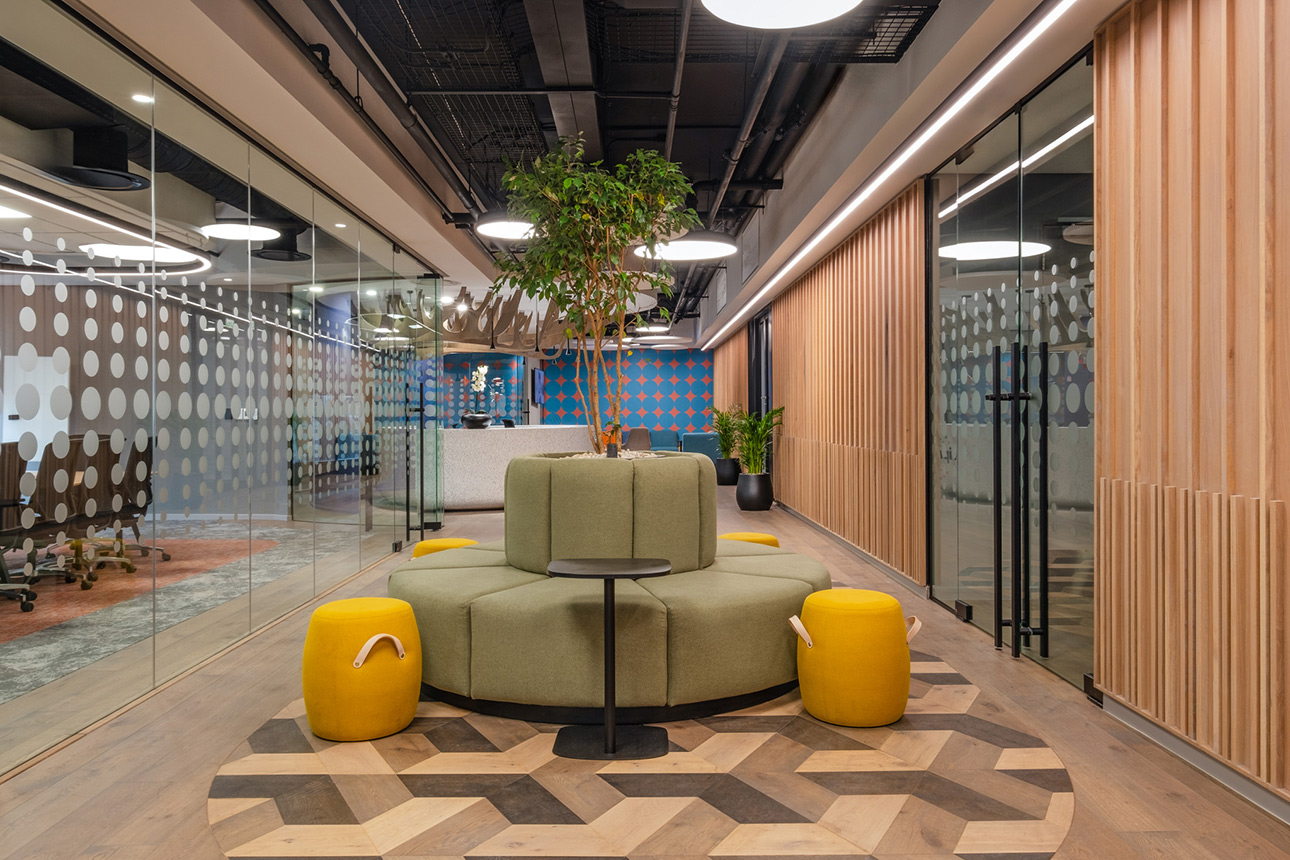
Balancing Personal Space and Collaborative Areas
A well-designed office balances personal workspaces with collaborative areas to optimize productivity. Personal spaces offer employees control and privacy, which are critical for concentration and focus.
Conversely, collaborative areas are essential for fostering teamwork, innovation, and communication. For Capita, Trend Group designed vibrant, playful collaboration spaces featuring movable screens, interactive walls, and comfortable seating. This mix of quiet zones and collaborative areas ensures employees have the right environment for any task, whether it requires focus or interaction.
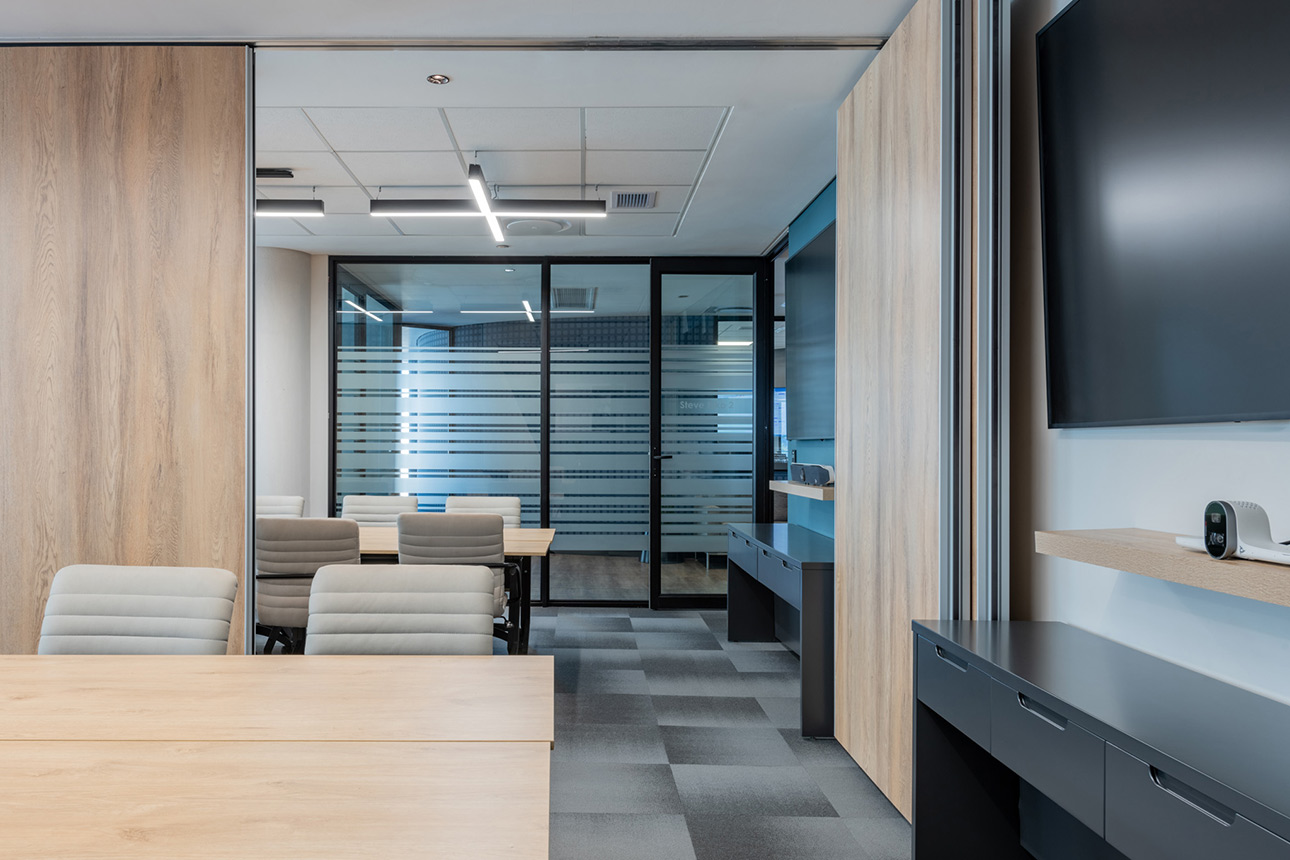
Key Office Design Elements for Enhancing Employee Well-Being
The Importance of Ergonomic Furniture
Investing in ergonomic furniture is essential for maintaining employee health and productivity. Adjustable chairs, standing desks, and supportive accessories help prevent musculoskeletal issues and reduce discomfort, allowing employees to work comfortably for extended periods. By prioritizing ergonomic solutions, businesses can reduce health-related absences and boost overall productivity.
Maintaining Optimal Temperature and Air Quality
Comfortable temperatures and high air quality are critical factors in employee well-being and productivity. Poor air quality can lead to fatigue, headaches, and decreased cognitive function, while uncomfortable temperatures can cause distraction and discomfort. Implementing efficient HVAC systems and air purifiers is vital for creating a healthier, more comfortable work environment.
Effective Noise Management Strategies
Excessive noise in the workplace is a common source of distraction and stress. Implementing noise management strategies, such as sound-absorbing panels, carpets, and thoughtful layout designs, can significantly reduce noise levels in work areas. Additionally, providing quiet zones or noise-cancelling headphones can help employees maintain focus in a busy office environment.
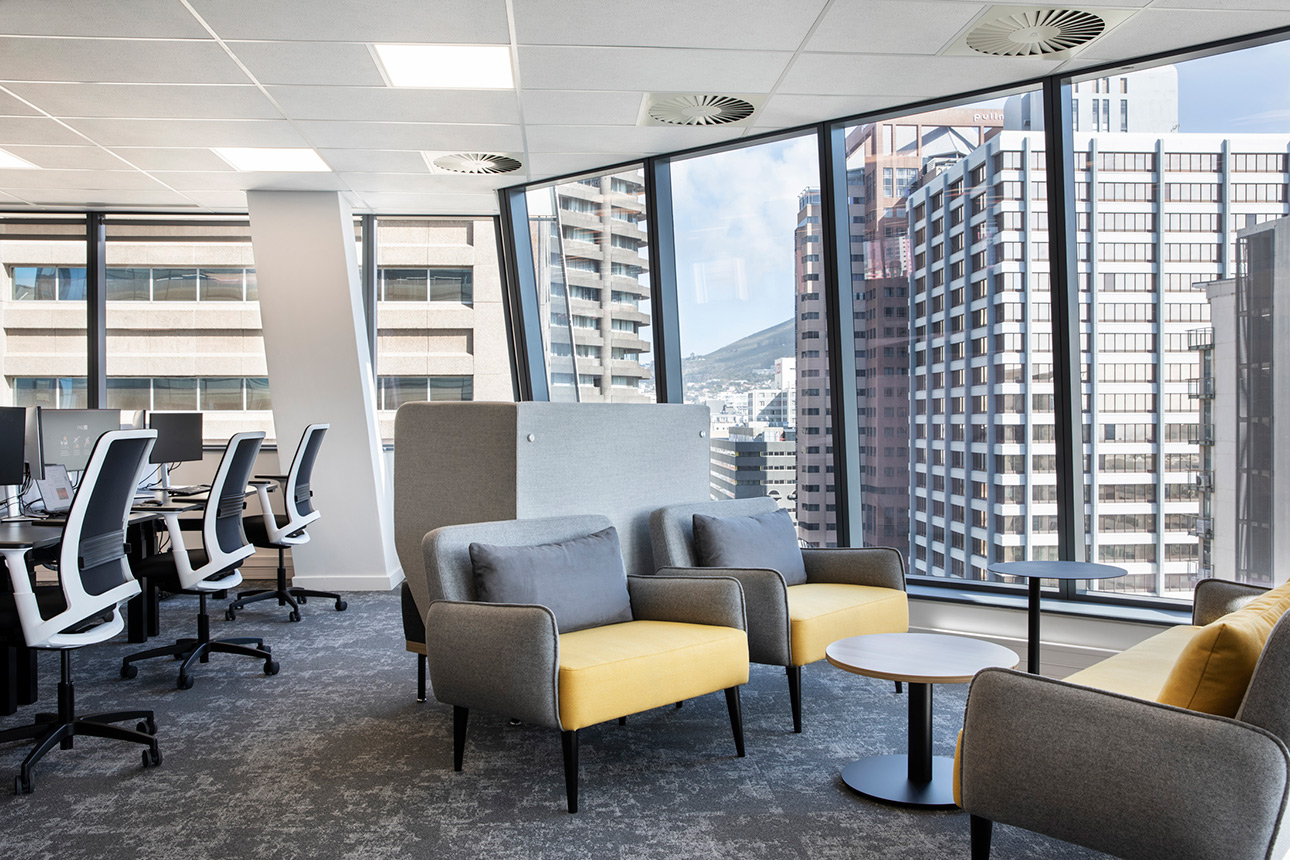
Optimizing Office Layout for Maximum Productivity
Open vs. Closed Office Spaces
The choice between open and closed office layouts can greatly affect communication, focus, and overall work dynamics. Open spaces encourage collaboration and transparency but can also lead to increased distractions. In contrast, closed spaces provide privacy and focus but may hinder spontaneous interaction. A hybrid office design that combines open spaces with private areas offers the best of both worlds, catering to different work styles and tasks.
Creating Distinct Zones for Various Work Activities
Designing distinct zones within the office for focused work, collaboration, and relaxation is key to optimizing workflow and creativity. Dedicated quiet zones allow for deep concentration, while collaborative zones promote teamwork and idea sharing. Relaxation areas provide employees with a space to unwind, reducing stress and supporting mental well-being. Incorporating these zones into your office layout is essential for maintaining a healthy work-life balance.
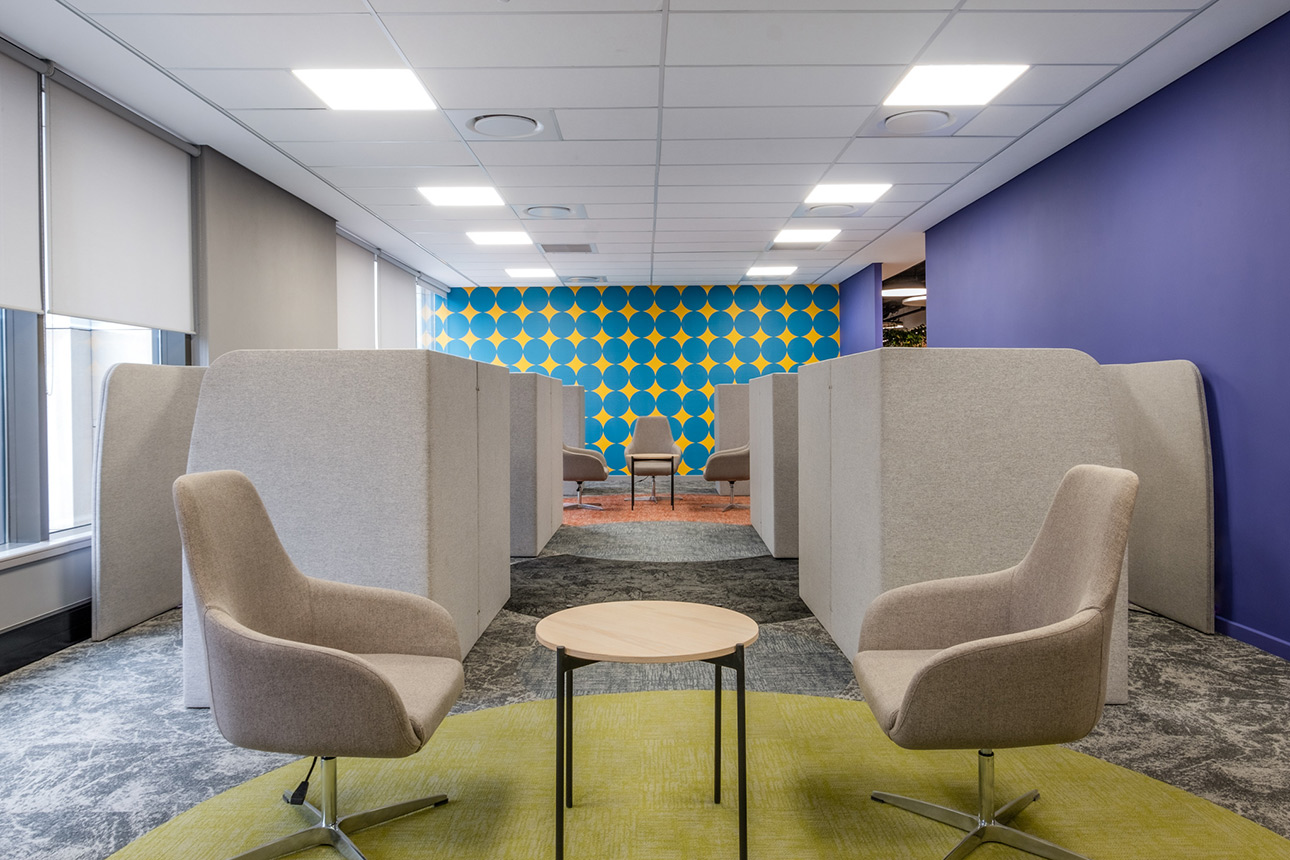
The Healthy Workplace Model: Six Key Elements
The Healthy Workplace Model outlines six key elements that contribute to a healthy and productive work environment:
- Privacy: Provide private spaces for focused work and confidential conversations.
- Flexibility: Create adaptable spaces that can be easily reconfigured for different tasks and team sizes.
- Equity: Ensure all employees have access to comfortable and functional workspaces.
- Comfort: Prioritize ergonomic furniture and comfortable environmental conditions, including natural light and green spaces.
- Connection: Foster a sense of community and collaboration through well-designed communal areas.
- Safety: Ensure both physical and psychological safety with secure, inclusive, and supportive design elements.
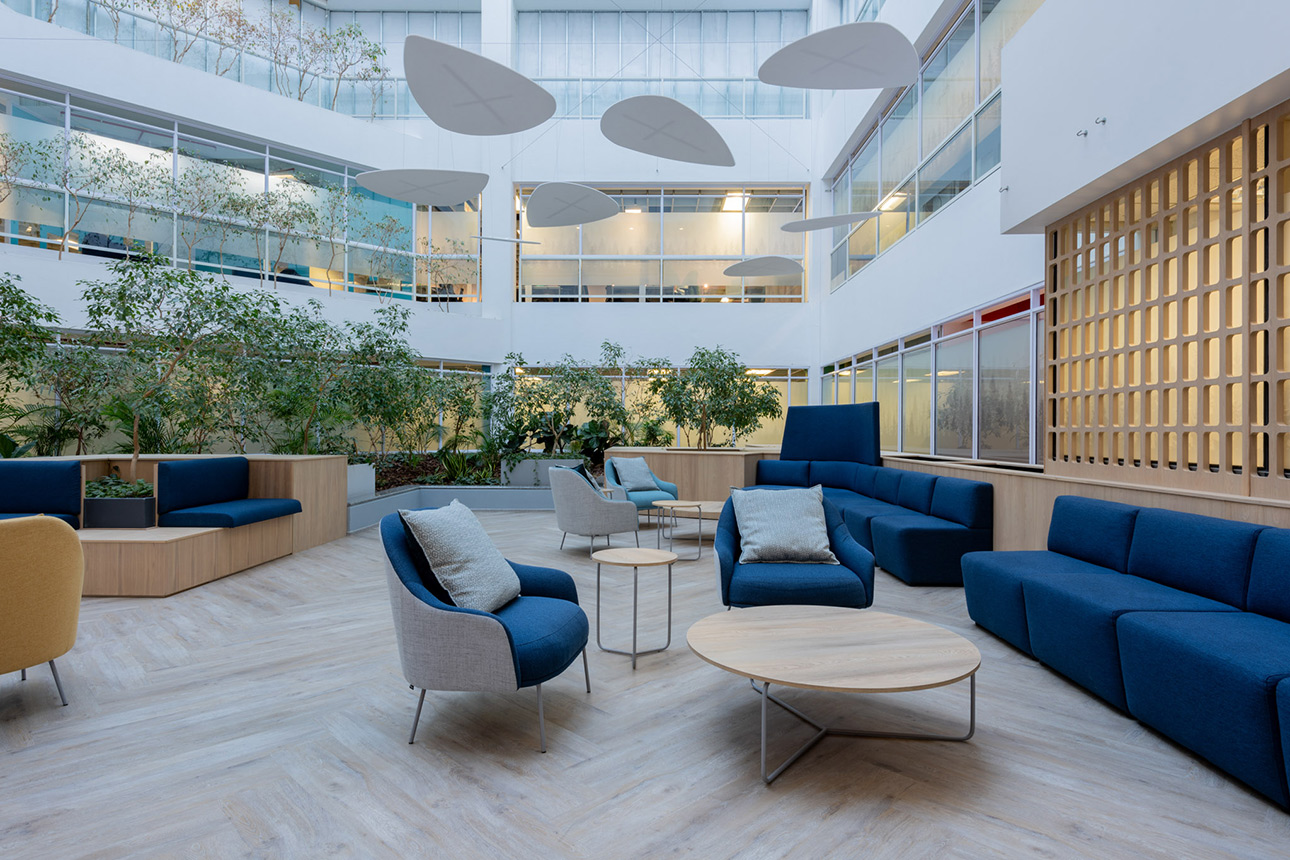
Consulting for Optimal Workspace Design
Understanding the psychology of workspace design is a powerful tool for enhancing employee well-being and productivity. By integrating elements such as natural light, colour psychology, ergonomic furniture, and effective noise management, businesses can create a workspace that supports health and efficiency. Implementing the principles of the Healthy Workplace Model can further ensure that your office environment meets the diverse needs of your employees.
If you are ready to transform your office into a hub of productivity and well-being, consulting with workspace design experts is the next step. At Trend Group, we specialize in creating innovative, tailored office spaces that align with your business’s unique needs. Our process begins with a comprehensive workplace analysis, ensuring that every aspect of your office design supports your business goals. We work closely with you throughout the design and creation process to deliver a final product that exceeds your expectations.
Contact us today to learn how we can help you design an office that enhances employee satisfaction and drives business success.
